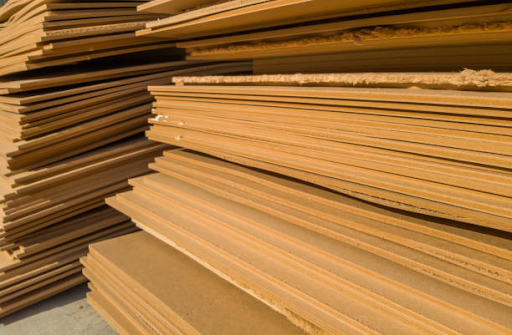In recent years, there has been no denying in saying the fact that construction projects are creating a very bad impact on the environment and shifting towards sustainable building practices. There is one effective way to reduce waste and minimize the footprints of carbon by constructing incorporating recycled building materials. These materials are derived from salvaged or repurposed resources, providing numerous benefits such as cost savings, reduced energy consumption, and decreased demand for virgin materials. In this article, we will explore how to utilize recycled building materials in your next construction project.
How to Use Recycled Building Materials for Your Next Construction Project
How to Use Recycled Building Materials for Your Next Construction Project
Conduct a Material Assessment
Before incorporating recycled building materials into your construction project, it is crucial to assess the available resources and determine their suitability for your specific needs. Consider the types of materials you require, such as structural components, finishes, or insulation, and identify potential sources of recycled materials. These sources may include salvage yards, deconstruction projects, demolition sites, or even local recycling facilities.
Research and Identify Suitable Recycled Materials
Once you have assessed your material requirements, conduct thorough research to identify suitable recycled building materials that align with your project goals. Some commonly used recycled materials in construction include:

Reclaimed Wood
Reclaimed wood is a popular choice for incorporating recycled building materials into construction projects. It involves salvaging wood from old barns, buildings, or demolished structures and repurposing it for various applications. Reclaimed wood adds a unique character and warmth to a project while reducing the need for harvesting new timber. It can be used for flooring, framing, decking, furniture, or decorative elements. By utilizing reclaimed wood, construction projects can achieve a rustic and environmentally friendly aesthetic.
Recycled Concrete
Recycled concrete is an excellent option for sustainable construction practices. It involves crushing and reusing old concrete from demolition sites or construction waste. This process not only diverts concrete waste from landfills but also reduces the demand for virgin aggregates. Recycled concrete can be used as a base material for foundations, roadways, and pathways. It provides a cost-effective and eco-friendly solution while maintaining structural integrity. By incorporating recycled concrete, construction projects can contribute to waste reduction and conserve natural resources.
Recycled Steel
Recycled steel offers significant environmental benefits when used as a building material. It involves melting down scrap steel from various sources and reusing it for structural elements, reinforcing bars, or other steel components. Utilizing recycled steel reduces energy consumption and conserves natural resources compared to the production of virgin steel. Recycled steel maintains the same strength and durability as new steel, making it a sustainable and cost-effective choice for construction projects. By incorporating recycled steel, construction projects can contribute to the reduction of carbon emissions and promote a circular economy.
Recycled Glass
Recycled glass provides an innovative and visually appealing option for construction projects. It involves crushing and repurposing glass waste into usable building materials. Recycled glass can be incorporated into concrete, countertops, tiles, or decorative features, adding a unique aesthetic touch. Using recycled glass helps reduce the amount of glass waste sent to landfills and conserves natural resources. It also reduces energy consumption and emissions associated with the production of new glass. By incorporating recycled glass, construction projects can achieve a distinctive and sustainable design while contributing to waste reduction efforts.
Recycled Plastic
Recycled plastic offers a versatile and sustainable alternative for construction projects. It involves transforming plastic waste, such as bottles or containers, into durable building materials. Recycled plastic can be used for roofing tiles, insulation, composite lumber, and various other applications. Utilizing recycled plastic reduces the consumption of fossil fuels used in the production of virgin plastics and helps divert plastic waste from landfills. It provides excellent insulation properties and requires minimal maintenance. By incorporating recycled plastic, construction projects can reduce their carbon footprint and promote the circular economy by giving new life to plastic waste.

Verify Quality and Safety Standards
When incorporating recycled building materials into a construction project, it is crucial to verify the quality and safety standards of these materials. Thoroughly inspect the recycled materials for any signs of damage, decay, or contamination that could compromise their performance or pose risks to occupants. Look for certifications or third-party verifications that attest to the quality and suitability of the recycled materials for construction purposes. It is also important to consult with professionals or experts in the field to ensure compliance with local building codes and regulations. By verifying the quality and safety of recycled materials, construction projects can ensure the longevity and reliability of their structures while prioritizing the well-being of occupants.
Adapt Design and Construction Practices
Incorporating recycled building materials may require adapting design and construction practices to accommodate their specific properties and characteristics. Collaborate closely with architects, engineers, and contractors to develop construction plans that optimize the use of recycled materials. Consider the dimensions, strengths, and limitations of the materials when designing structural elements, finishes, or interior features. This may involve exploring alternative construction techniques or customizing designs to suit the unique qualities of recycled materials. By adapting design and construction practices, construction projects can maximize the efficiency and effectiveness of recycled materials, resulting in sustainable and visually appealing outcomes.
Embrace Creativity and Innovation
Using recycled building materials provides an opportunity to embrace creativity and innovation in construction projects. Instead of solely focusing on traditional design approaches, explore unique ways to incorporate salvaged materials into architectural features, interior design elements, or landscaping. Unleash your imagination to create stunning focal points or artistic installations that showcase the distinctive qualities of recycled materials. Consider mixing different types of recycled materials to achieve captivating textures or color schemes. By embracing creativity and innovation, construction projects can not only reduce waste and promote sustainability but also create visually striking spaces that inspire and captivate occupants and visitors.
Promote Awareness and Education
Promoting awareness and education about the benefits of using recycled building materials is crucial to driving sustainable practices in the construction industry. Engage stakeholders, including clients, contractors, and the local community, by highlighting the environmental advantages, cost savings, and long-term sustainability associated with these materials. Share information about successful projects that have incorporated recycled materials, showcasing their positive impact. Organize workshops, seminars, or educational campaigns to disseminate knowledge and best practices. Encourage open dialogue and collaboration among industry professionals to foster the exchange of ideas and experiences related to sustainable construction. By promoting awareness and education, construction projects can inspire others to adopt environmentally conscious practices and contribute to a greener future.
Monitor and Track Environmental Impact
Throughout the construction process, it is essential to monitor and track the environmental impact of using recycled building materials. Measure and document the amount of waste diverted from landfills, energy savings achieved, and reductions in carbon emissions. This data provides valuable insights into the sustainability achievements of the project and can inform future initiatives. Implement systems to monitor and track the performance of recycled materials over time, assessing their durability and longevity. Regularly assess the project's environmental footprint and compare it to benchmarks or industry standards. By monitoring and tracking the environmental impact, construction projects can demonstrate their commitment to sustainability, identify areas for improvement, and inspire others to embrace more eco-friendly practices.
Conclusion
Incorporating recycled building materials in construction projects is a sustainable and responsible choice that benefits both the environment and the bottom line. By conducting material assessments, identifying suitable recycled materials, verifying quality standards, adapting design practices, and promoting awareness, you can successfully integrate these materials into your next construction project. Embracing the use of recycled building materials is a step towards a more sustainable and eco-friendly construction industry.
FAQs (Frequently Asked Questions):
Q1. Are recycled building materials as durable as new materials?
A1. Yes, recycled building materials can be just as durable as new materials. When sourced from reputable suppliers and properly inspected for quality, recycled materials can meet industry standards and perform effectively in construction projects.
Q2. How do recycled building materials contribute to sustainability?
A2. Recycled building materials contribute to sustainability by reducing waste sent to landfills, conserving natural resources, and minimizing the carbon footprint associated with manufacturing new materials. They promote a circular economy and help preserve the environment for future generations.
Q3. Can I use recycled building materials in all types of construction projects?
A3. Yes, recycled building materials can be used in a wide range of construction projects. They are suitable for structural components, finishes, insulation, and decorative elements. However, it's important to assess the specific needs of your project and ensure the recycled materials meet the required standards.
Q4. Are there cost savings associated with using recycled building materials?
A4. Yes, using recycled building materials can result in cost savings. These materials are often more affordable than new alternatives, and some may be available at discounted prices. Additionally, incorporating recycled materials can reduce waste disposal costs and potentially lower energy consumption during the construction process.
Q5. How can I ensure the safety of recycled building materials?
A5. To ensure the safety of recycled building materials, verify their quality by inspecting for damage, decay, or contamination. Look for certifications or third-party verifications that attest to their suitability. Consult with professionals and ensure compliance with local building codes and regulations. Taking these measures will help ensure the safety and integrity of your construction project.
